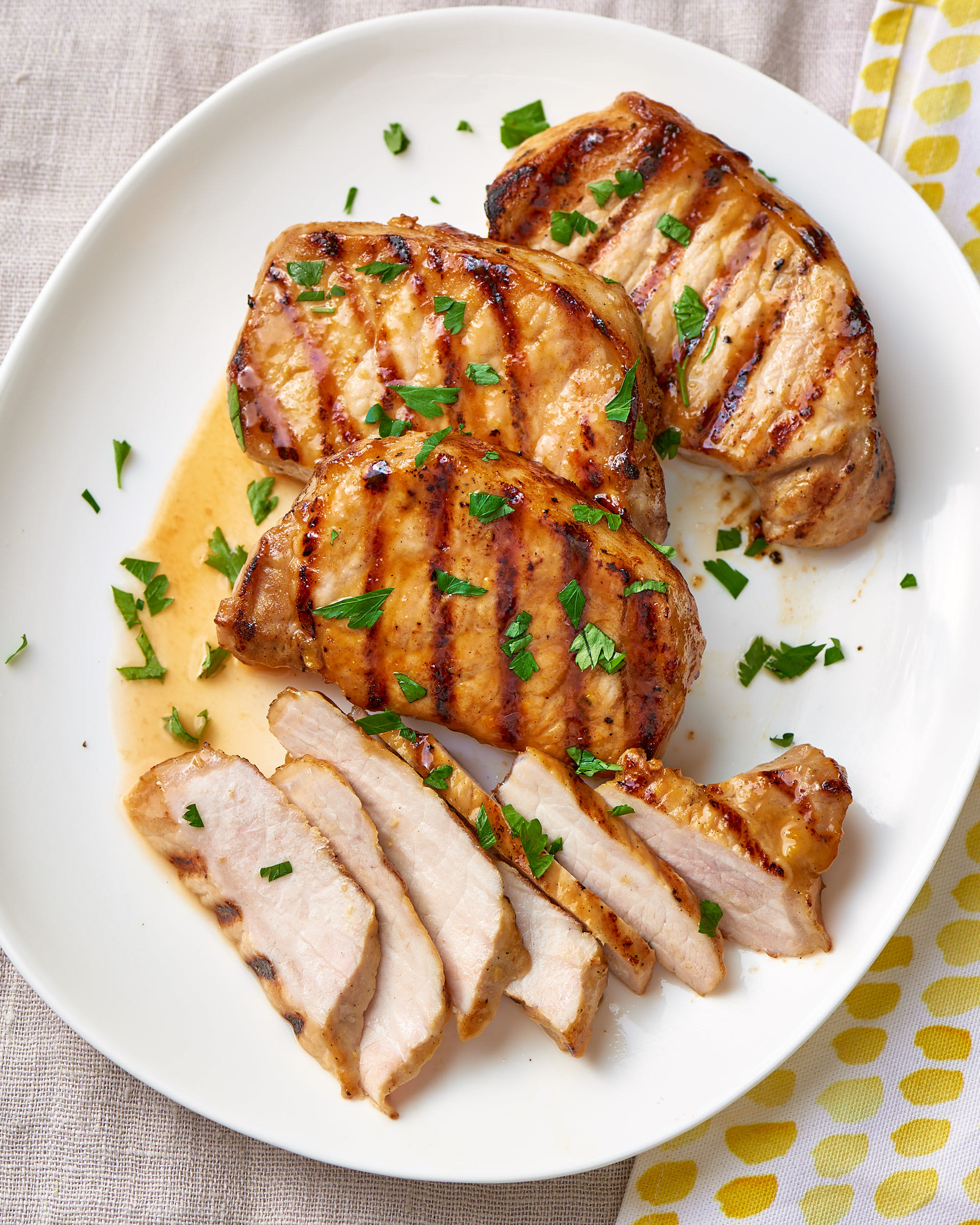

from 2002 to 2007) and these are caused by undercooked pork and by undercooked wild game. Few infections occur in the so-called developed world (only 11 cases per year in the U.S. Typically, most infections produce no symptoms at all or mild cases of nausea, heartburn, indigestion and diarrhea. Heat is the only way to kill this particular parasite, freezing doesn't kill it, low cooking temperatures don't kill it. SO WHY WERE WE OVER-COOKING PORK SO LONG ANYWAY? Cooking pork to a safe temperature prevents the parasitic disease called "trichinosis". It's not "bloody" like rare-cooked beef but still, the pork's color can be described only as pink-pink-pink. In contrast, pork cooked to 145 degrees remains decidedly pink. Color-wise, the slogan worked because pork cooked to 160 degrees is a pale, languid white-gray color.

REMEMBER WHEN PORK WAS THE "OTHER WHITE MEAT"? Wanting to join the healthy-chicken parade and avoid the bad-red-meat bandwagon, the National Pork Council once dubbed pork the "other white meat". Even very pink pork can be safe! Source: (a consortium of U.S. But judging the doneness of cooked pork by its color just doesn't work. The bottom line? Beef doneness can be determined by color. Second, there's "return to redness" or "color reversion" where well-cooked and vacuum-packed pork returns to a pink color even though it's been well-cooked. First, there's "persistent pink" color when high pH pork stays pink even after cooked to a high temperature, the pink color can even become more pronounced after the pork is sliced and thus exposed to air. Source: .ĬOLOR IS AN UNRELIABLE INDICATOR OF DONENESS Pork can be affected by two factors, a function of pH and cooking heat.
#Pork temp when done plus#
Maybe it was just me, but I was glad when the USDA made it official: It's just as safe to cook pork to 145F degrees plus a three-minute rest period as to cook it to 160 degrees. THE NEW SAFE TEMPERATURE FOR COOKING PORK Back in 2011, the USDA lowered the "safe" cooking temperature for whole cuts (that's important) of pork from 160 degrees to 145 degrees plus a three-minute rest period (that is too).Įven before the USDA announcement, knowledgable chefs and cooks, including me, were already cooking pork to 145F (or even lower) for a long while, preserving pork's natural juicy tenderness.


 0 kommentar(er)
0 kommentar(er)
